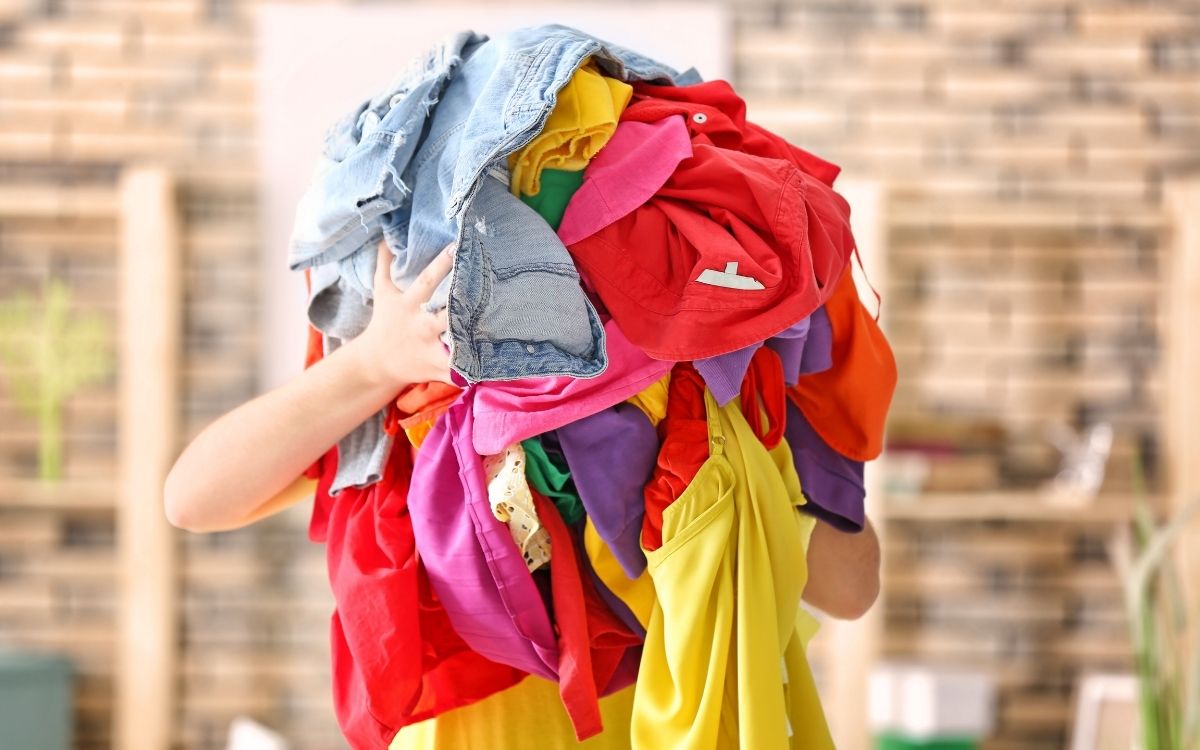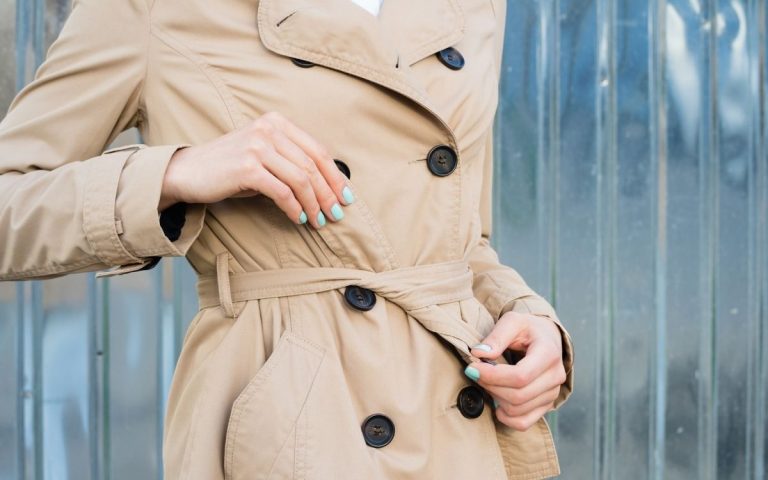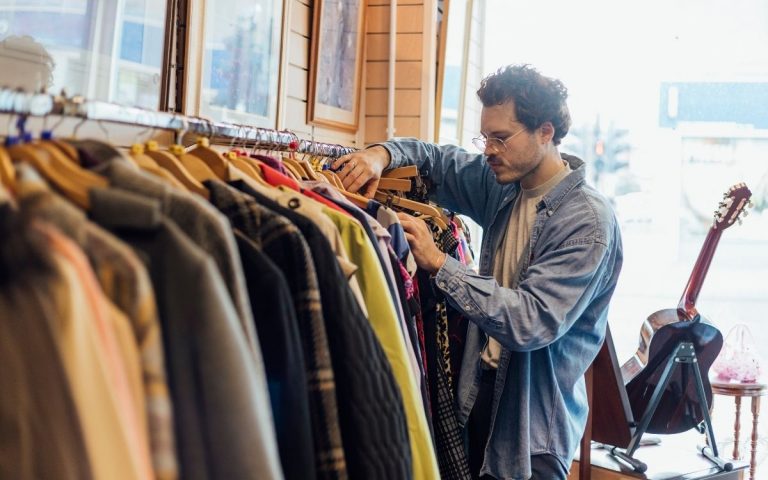What are the Bins? 5 Tips for Shopping the Goodwill Outlet
You might have heard about the bins from avid thrift shoppers. Maybe you read about Goodwill Outlet Stores on the bio page of a small business selling upcycled items.
You might be curious about what they are, or you want to know a little bit more about how to shop at these Goodwill Outlets.
But what exactly are the bins?
Goodwill Outlets are the last stop on second-hand items’ journey to being recycled or destroyed. Known for the big blue containers, they present their stock in, or ‘the bins’ as they are sometimes referred to. These bins are filled with anything–from electronics to toys to clothes.
So perhaps you’re considering popping in to see what you’ll find—but be warned, this is not just a place where you can do a quick stop and browse. Goodwill Outlets are far different from Goodwill Stores.
It might sound overwhelming, but there are a few things you might find helpful for your first visit.
Goodwill Stores vs. Goodwill Outlets
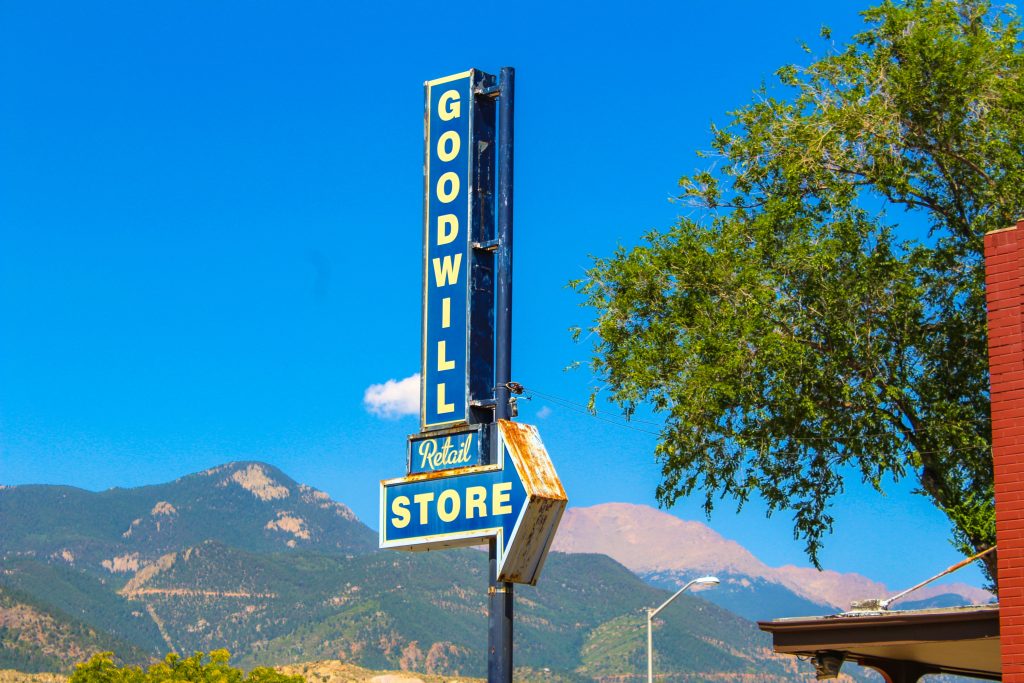
When you donate clothes or items to Goodwill, they’re likely to end up in a Goodwill Retail Store first. These are what you’d frequently refer to as thrift stores and where most people start their journey into the thrifting world.
However, these are retail stores, meaning that their goal is to first and foremost make a profit.
On the other hand, Goodwill Outlet Stores are where the unsold stock ends up if no one purchases it. They are less ideal for casual shoppers but frequented by regular thrift shoppers.
The goal of Goodwill outlets is mainly to keep things from ending up in a landfill.
This doesn’t necessarily mean these items are of lousy quality.
Thrift store stock usually has a ‘shelf life’ of around four to six weeks, at which point items go on sale. After this, they are packed up and shipped to the closest Goodwill Outlet Store.
This is where stock is loosely sorted into the iconic blue bins and wheeled out to be sold by the pound.
How Do the Bins Work?
While Goodwill Retail Stores usually price items individually, Goodwill Outlet Stores price things by weight. Items that are large or heavy are sometimes priced separately at lower prices or discounts.
It’s simple—just rifle through the bins and find an item that you want.
Unlike retail stores where you have time to browse, bin shopping is much more quick-paced.
The bins change multiple times throughout a single day. Due to this, most frequent shoppers will set aside an entire day just for bin shopping.
Once one container is finished, the next is wheeled out to take its place. Whatever is left behind in the last bin is then sent to be recycled or destroyed, depending on its material.
Since they are sold by weight and not individually priced, this can make Goodwill Outlet shopping very inexpensive. You might even leave with a few lucky finds that you would never have found otherwise.
What Can I Find in the Bins?
You can find anything and everything at Goodwill Outlets. These aren’t always throwaway items. Some of the things can be useful and in good condition or may need minimal care to restore.
Sometimes objects have just been overlooked or priced high at the original retail outlet. You may come across:
- Toys and stuffed animals
- Clothes and other textiles
- Electronics and houseware
- Craft supplies and tools
- Furniture and décor
- Seasonal decorations and costumes
You might find hidden gems: items that still have their original store tag or vintage clothing sold at a lower price.
It might not always be on the top layer of bin items, though, so you might have to keep digging to find what you’re looking for.
Making the Most Out of Goodwill Outlet Shopping
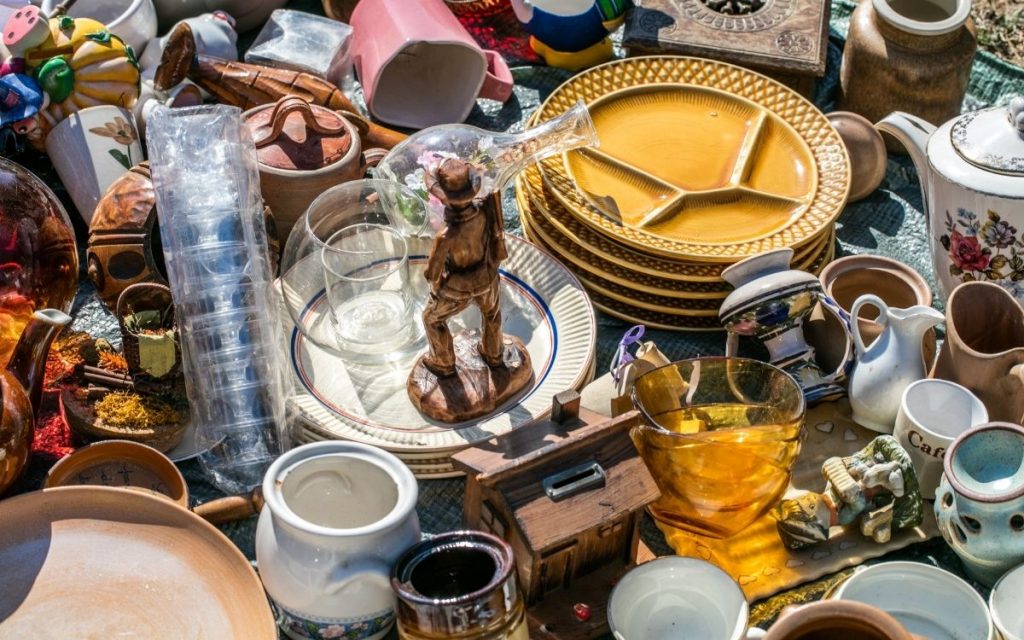
As you can see, a Goodwill Outlet shopping experience can be a little bit disorienting at first. But that doesn’t have to scare you away!
It may take a while to get into the groove of digging around in those big blue bins, but it can be a worthwhile experience if you know how to handle it.
There are a few unspoken rules to this type of shopping—and knowing what to do if you are heading to one of these outlets before you throw yourself into the deep end can make you feel a little more at ease.
5 Tips for Shopping The Bins
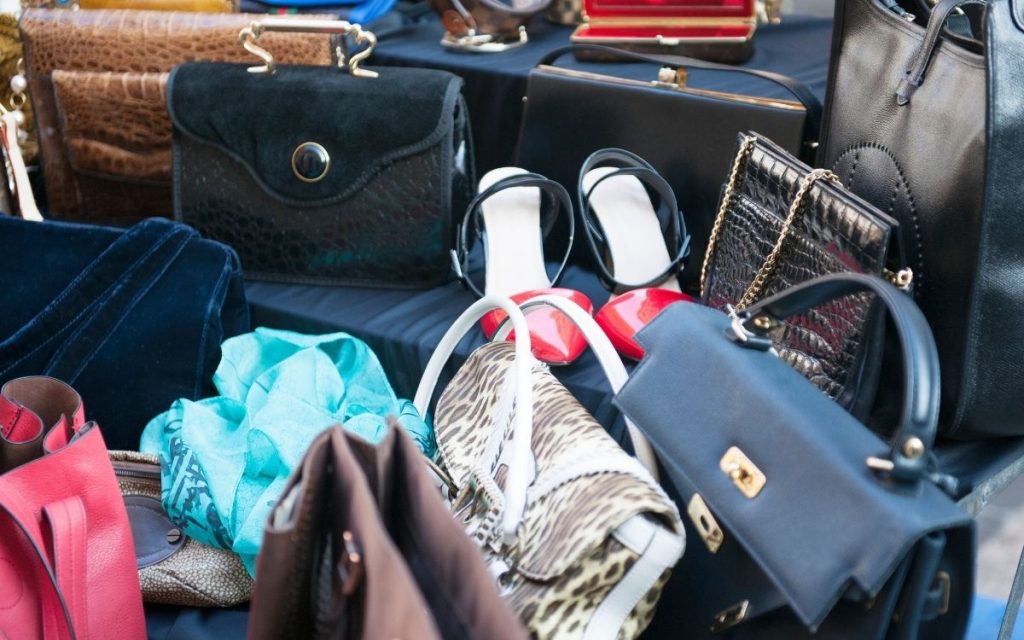
1. Be respectful of the other people there.
Don’t be rude to the staff or other shoppers. Be careful not to shove anyone, and absolutely do not take any finds out of another person’s trolley.
2. Be patient while you wait.
Don’t rush the new bins or the staff while they’re preparing the containers. The staff usually gives the okay to start shopping, so don’t just run ahead and start digging.
3. Go with a friend.
Your friend might find things you have overlooked. They could keep you in check in case you start to go overboard with your shopping. If your friend is familiar with outlet shopping, all the better.
4. Don’t take too long on a single item.
If you’re stuck focusing on one thing, you might miss something even better. Instead, give a quick look over and put it in your cart. You can do a thorough check later.
5. Keep an eye on your things.
Keep an eye on your trolley and bags to make sure they don’t get taken. It is a busy space, with lots of strangers, and it’s better not to risk losing your personal belongings or finds.
5 Things You Need to Bring With You When Shopping The Bins
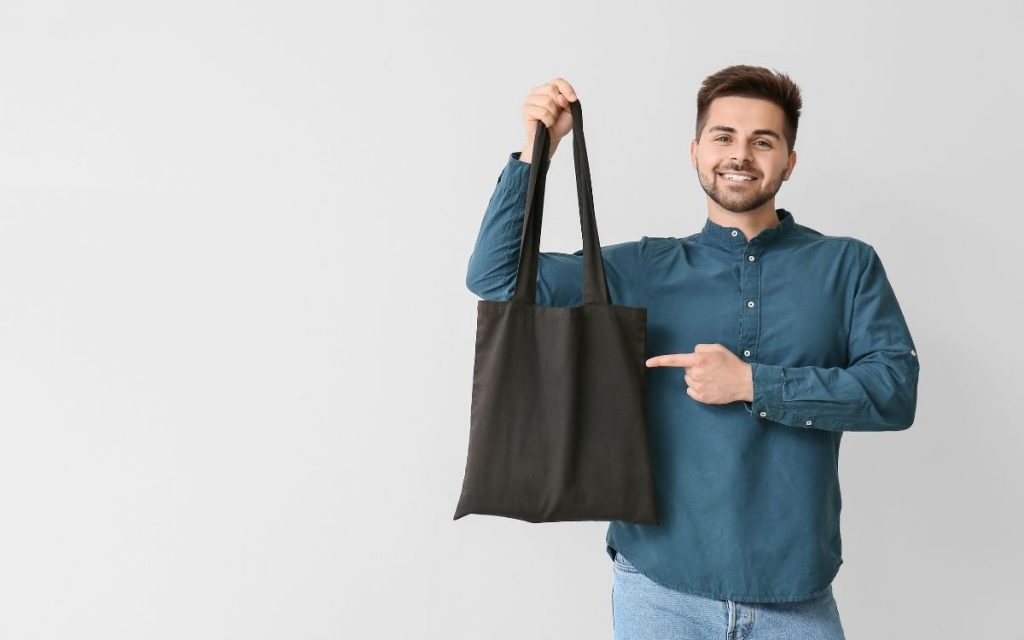
1. Gloves
to avoid getting hurt while digging through bins (you never know what’s mixed in with bins that appear to be full of soft goods – I once found the business end of a dirty dinner fork while digging through a bunch of clothes).
Pro Tip: Try leather gardening gloves since they’ll give you more protection than latex when it comes to sharp objects – and they’re sustainable!
Bonus Pro Tip: Leave one hand ungloved in case you want to feel the quality of a fabric.
Batteries to test battery-powered objects
Water and a snack if you’re staying long
Comfortable clothes (sometimes digging through the bins can get pretty physical and you want to be able to move freely)
Hand sanitizer and wet wipes to clean items
What Are You Looking For?
When going to a thrift store, you can never be sure what you’ll find. Some outings can turn out to be a complete bust, while others could have you walking away with boxes of bargains.
Though for first-time shoppers, the bins can be quite overwhelming—especially if you don’t know what you’re looking for. First of all, determine why you are doing the shopping.
If you’re planning on reselling items, you should keep an eye out for things that are of good quality and might do well with little TLC. This could be brand-name items or unique, high-quality things.
Keep in mind that you’re buying to resell, so if you’re buying something broken, you wouldn’t want to lose money in the process.
Some thrift shoppers want to find crafting supplies or textiles. If you’re looking for something to upcycle, the condition of items isn’t really a problem.
Instead, you should be focusing on the materials used. Ignore smaller imperfections and look for a diamond in the rough rather than something perfect, depending on what you want to use it for.
Those shopping for personal use may have a completely different approach. If you’re looking for a few nice winter jackets or some household furniture, it might be like finding a needle in a haystack. It’s advisable to bring a friend along who can help you look.
What to Look Out For
Not everything will be in perfect condition. Depending on the damage and the level of effort you’re willing to put in, items can be cleaned, fixed, and look or work completely fine. Other times, something might not be worth your time. Here are some things to check before you buy:
Does it have all the parts included? There’s nothing more annoying than buying a set of items and finding out one part is missing. Make sure to double-check whether all the pieces are there.

Is it stained, or is the material badly worn? Sometimes stains don’t come out, and if it has been worn through, it could break or tear soon.
Are tears in clothes able to be fixed? If a tear is irreparable or you’re not willing to fix it, you should probably reconsider purchasing the item.
Are the items structurally sound? When buying furniture or larger items, check whether the structure is intact. Reupholstering a couch can only be worthwhile if it will actually last long enough to be used.
Conclusion
As soon as you get home, remember to clean all of your new items! They might be dusty after being stored for so long, and you never know what kinds of germs they could be carrying.
Be careful of letting bed bugs into your house if you buy new furniture; treat all material items for bed bugs just in case.
Thrift shopping at Goodwill Outlets can be a fun experience—especially if you’re at least a little prepared.
Don’t let the size of these stores intimidate you. After all, you’ll never know if you’ll like this kind of shopping without giving it a try first.
Resources
https://www.dmgoodwill.org/thrift/5-insider-tips-for-shopping-the-goodwill-outlet/
https://www.hawk-hill.com/goodwill-outlet-thrift/
https://www.dinasdays.com/how-to-shop-the-thrift-store-bins/
https://www.thebalanceeveryday.com/goodwill-outlet-store-locations-1387752
https://resale.medium.com/thrifting-goodwill-bins-outlets-clearance-center-c1f93ea90a41
https://www.thefamilypickers.com/what-is-the-difference-between-goodwill-outlet-and-retail/

